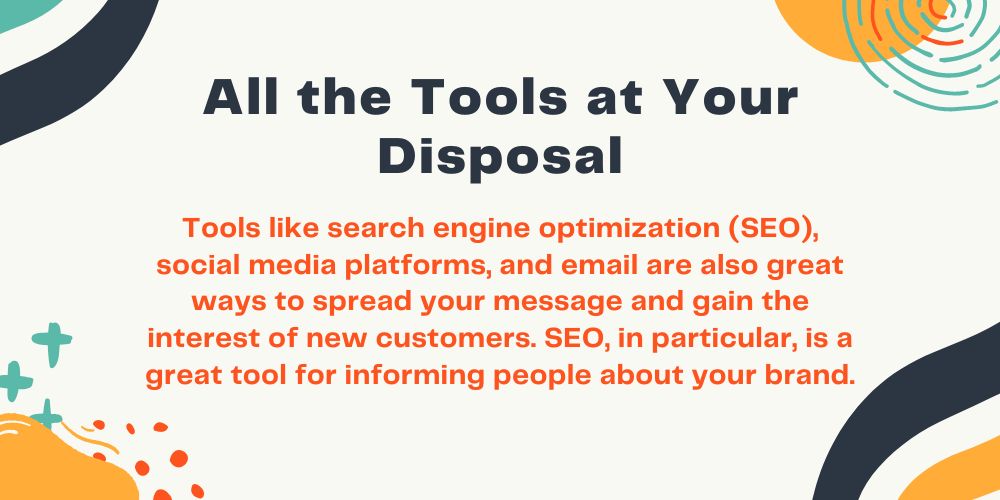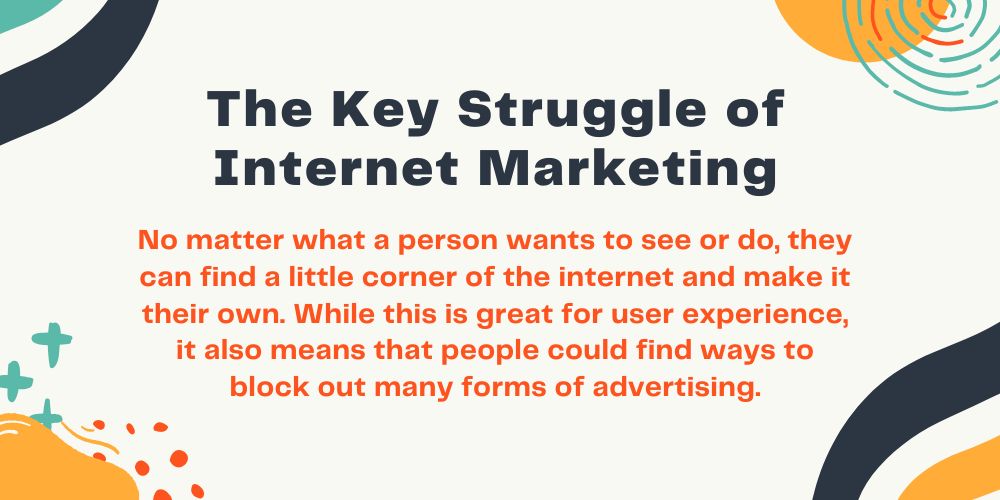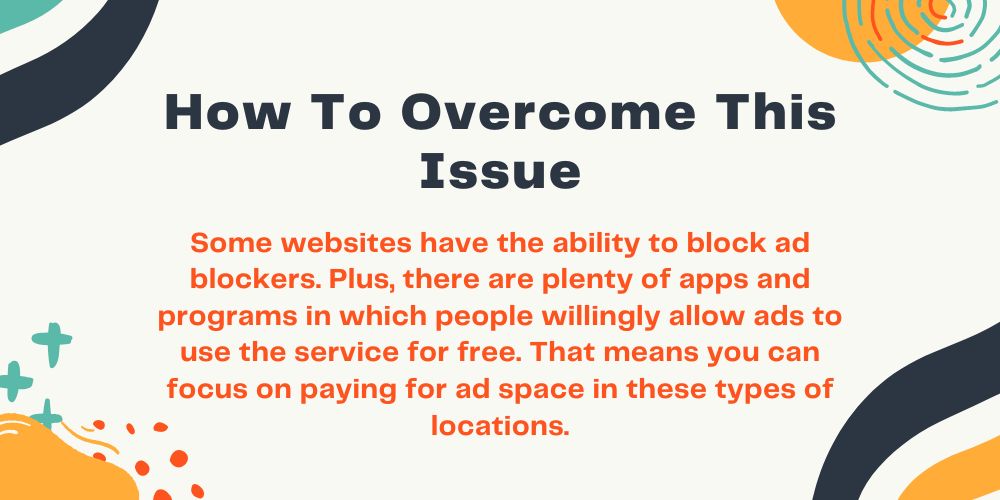How the Internet Revolutionized the Way We Do Marketing
Marketing is always changing, but nothing has altered how we advertise and sell products as the internet has. Here’s a look at how it revolutionized marketing.
It’s hard to imagine where the world would be right now without the internet. The ability to do most things online has drastically changed the way our society works. You can now shop from home, see family members who live across the country, and even work from home.
In fact, many aspects of running a company look much different now than they did about 20 years ago. While one could debate which part of business has undergone the most changes since the arrival of the internet, we’d argue that marketing has changed the most, and most of it has been for the better.
So let’s take the time to deep-dive into the history of marketing in recent years to see how the internet revolutionized it. It’ll be interesting to see how it has benefitted, as well as figure out which areas could still use some improvement.
The Basis of Old-School Marketing
Before the days of the internet, companies primarily did their advertising through the use of print ads. These could appear in newspapers and magazines or on giant billboards. There were several other options, but these were the main ones. While they were effective, they couldn’t grab the consumer’s attention like a video ad could.
That’s why many companies turned to TV advertisements. These were much flashier but always cost significantly more. No matter which avenue you chose, though, it was nearly impossible to know if your ads were working as intended. You could occasionally ask customers how they discovered you through a survey, but most of the time, you just had to watch to see if sales increased after the release of a new advertisement.

The Changes Brought by Internet Marketing
Things are much different now, thanks to the internet. Online ads are not only more visually appealing and interactive but also trackable. This is huge for marketers. Now you can know exactly how effective a specific ad campaign is by looking at the numbers.
With the click of a few buttons, you can see how many people have viewed an ad, clicked on it, and even who has made a purchase from going to your site through the ad. This kind of data is invaluable in business. It’ll help marketers determine which kinds of items are worth pushing and which target audiences they should try to pursue.
On top of that, since the internet is a place that anyone and everyone can frequent, you can reach any audience you desire. You still need to figure out which sites they visit, but the entire world is at your disposal as a marketer. Plus, since most people use the internet to find things, the average consumer will be more accepting of an informative ad. That means some people might actively look for ads when they’re in the market to buy something.

How Essential a Web Presence Is
Because of all this, getting your business online is more important than ever. If customers can’t find your company online, it’ll be like you don’t even exist. That’s why almost every business under the sun has a website these days. Even if you don’t sell your products or services online, you need to let potential customers know who you are. Failing to do so will hurt your bottom line.
You need more than just a website, though. Making a Google My Business account will help people quickly and easily find your nearest location, see how long you’re open, and find out what other people think of you. If they can’t find this kind of info, they’ll move on to a competitor who has these details online.
Also, even though not all stores can easily conduct business online, you should look into e-commerce if possible. Being able to sell to people from the comfort of their own homes is crucial—the pandemic taught us that. Selling online opens your business to customers who could never have visited your store in the first place, increasing your sales potential.

All the Tools at Your Disposal
It’s important to realize that the internet isn’t the tool companies use to market to customers. It’s just where all these great marketing tools exist. General pay-per-click (PPC) ads are only a part of what companies can use to generate sales.
Tools like search engine optimization (SEO), social media platforms, and email are also great ways to spread your message and gain the interest of new customers. SEO, in particular, is a great tool for informing people about your brand. By improving the keywords used on your site and creating original blog content, you can attract new users through general web searches.
Social media is also a strong marketing tool. As with having your own website, you need to create a few social media pages. These will help even more people discover you. But more importantly, they’ll help grow the bond between you and your current customer base.
If you want to stick to a more professional avenue, email might be the best option for your company. People check their emails regularly these days since they receive most of their important info and documents through them. That means your advertising emails and weekly newsletter will always get paired with other pieces of mail they’ll look at. It should go without saying, but there’s a reason why email is still one of the best marketing formats.
By using a mix of these tools or only the ones that work best for your company, you’ll constantly bring in new and returning customers. Plus, the internet is ever evolving, and businesses constantly discover new ways to advertise to consumers. If you keep up with these advancements, you can find the format that works best for the products you sell.

The Key Struggle of Internet Marketing
However, even though the internet has done a lot to revolutionize the way we do marketing, it doesn’t come without its flaws. What makes the internet such an attractive outlet for people is how customizable it can be. No matter what a person wants to see or do, they can find a little corner of the internet and make it their own.
While this is great for user experience, it also means that people could find ways to block out many forms of advertising. Ad block programs are the biggest culprits of this. By installing a single program, anyone can block most online PPC ads. Even though you won’t have to pay for blocked ads to those users, your company is still missing out on potential customers because of it.
It doesn’t stop there, though. Not everyone constantly uses search engines to find what they’re looking for online. Also, many people have sworn off social media in recent years, cutting off your company’s fun or informative updates in the process. On top of that, many email programs send advertising emails directly to a special folder that most people never open. Even if they don’t, people can unsubscribe from your emails anytime.

How To Overcome This Issue
So what can your company do to fix this? Fortunately, there’s a counter for every counter to advertising. Some websites have the ability to block ad blockers. Plus, there are plenty of apps and programs in which people willingly allow ads to use the service for free. That means you can focus on paying for ad space in these types of locations.
While these strategies work well for PPC, they don’t help with SEO, social media, or email. If you aren’t doing well in these areas, you might need to focus more on adding value for your current customers. People usually stop following your company or unsubscribe from your emails because they don’t see your ads as worth their time. If you find ways to reinject that value, you’ll be able to bring them back.
Try including deeper discounts on your products or introducing a strong loyalty program. If people like your products and the things you offer around them, they’ll come back. You just have to prove to them that you’re worth their time.
